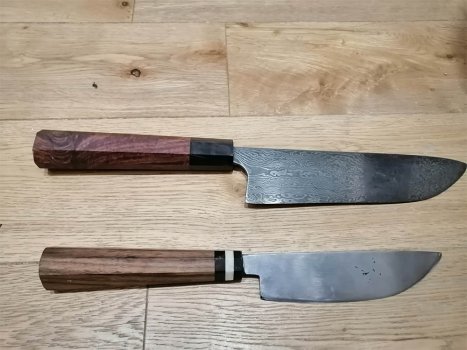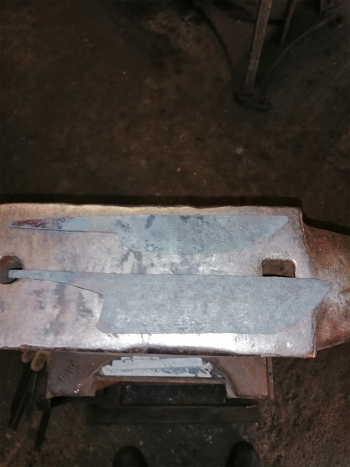Smurf masher
Well-Known Member
This is the model:

 warm-glass.co.uk
warm-glass.co.uk
I got it very cheap on Ebay. So cheap that worst case it can be used as a toaster oven for tempering or for cooking my stablized wood.
But I really got it as I'm only going to be making sub 12" knives and the max temp on it is 2000F or 1093c. Which appears to be good enough for annealing stainless steel.
I know I'm trying to run before I can crawl (i've made 2 knives) but I plan to try stainless damascus with stainless foil/argon and heat treat it with this little kiln. Diagonally I can just about fit a 11 inch blade, add an angle upward and I can get 14 inches. (yeah its tight... 20cmx 20cmx 14cmH.
Will this work as an early tryout unit? One that I may well replace once I get more funds. And yeah... I erm... bought a load of M390 super clean direct from Boehler.
Which has the following heat treat guidance.
Heat treatment recommendation
1.030 °C/–80 °C/2 x 250-350°C
for best corrosion resistance and toughness;
goal hardness 56 – 58 HRc
1.030 °C/–80 °C/2 x 495-525°C
for balanced wear resistance,
hardness & toughness;
goal hardness 58 – 60 HRc
I've also got a load of AEB-l, elmax, 1095, 15n20, and 403 stainless. I was going to try a san mai in AEB-l 403 damascus with the m390 as the core. (yes I know it is hard, but I'm happy to fail 20 times before I get it right) I'm also going to build a mcdonald rolling mill using an old slow geared winch motor.
Do I need to do the cryo stage? And if so How the heck do I get liquid nitrogen, and avoid freezing my face off. Pics of my first knives are below.

Paragon SC2 Glass Kiln - FREE MAINLAND UK DELIVERY
A value tabletop kiln for glass fusing and slumping. Great for jewellery and smaller glass work. Built by Paragon Kilns in the USA. A good looking design with a simple programmer full of pre-programmed schedules to get you going, the Paragon SC2 is a good choice if you are looking for a...
I got it very cheap on Ebay. So cheap that worst case it can be used as a toaster oven for tempering or for cooking my stablized wood.
But I really got it as I'm only going to be making sub 12" knives and the max temp on it is 2000F or 1093c. Which appears to be good enough for annealing stainless steel.
I know I'm trying to run before I can crawl (i've made 2 knives) but I plan to try stainless damascus with stainless foil/argon and heat treat it with this little kiln. Diagonally I can just about fit a 11 inch blade, add an angle upward and I can get 14 inches. (yeah its tight... 20cmx 20cmx 14cmH.
Will this work as an early tryout unit? One that I may well replace once I get more funds. And yeah... I erm... bought a load of M390 super clean direct from Boehler.
Which has the following heat treat guidance.
Heat treatment recommendation
1.030 °C/–80 °C/2 x 250-350°C
for best corrosion resistance and toughness;
goal hardness 56 – 58 HRc
1.030 °C/–80 °C/2 x 495-525°C
for balanced wear resistance,
hardness & toughness;
goal hardness 58 – 60 HRc
I've also got a load of AEB-l, elmax, 1095, 15n20, and 403 stainless. I was going to try a san mai in AEB-l 403 damascus with the m390 as the core. (yes I know it is hard, but I'm happy to fail 20 times before I get it right) I'm also going to build a mcdonald rolling mill using an old slow geared winch motor.
Do I need to do the cryo stage? And if so How the heck do I get liquid nitrogen, and avoid freezing my face off. Pics of my first knives are below.
Attachments
Last edited:



